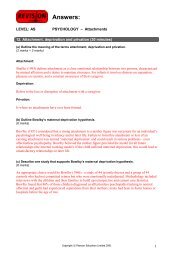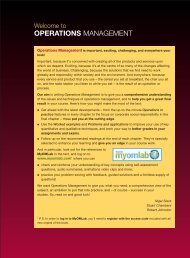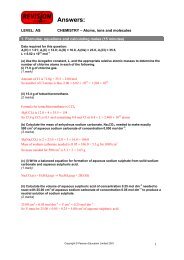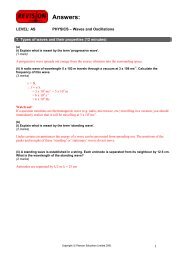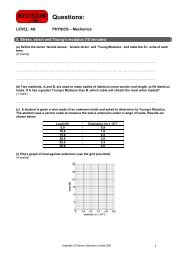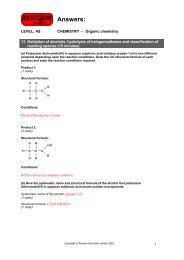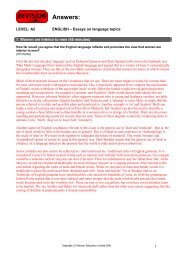The Dove Campaign for Real Beauty - Pearson
The Dove Campaign for Real Beauty - Pearson
The Dove Campaign for Real Beauty - Pearson
Create successful ePaper yourself
Turn your PDF publications into a flip-book with our unique Google optimized e-Paper software.
Part 1 Marketing now<strong>The</strong> sustainable marketing concept suggests that making defective goods, either knowingly orunknowingly, defies the basic marketing principle of customer care.Intrinsically harmful goodsSome products, such as red wine, are harmful to customers if consumed to excess. Others, suchas cigarettes, are harmful in any quantity. Yet others, such as asbestos, are harmful if ingestedaccidentally. How do products that kill those who consume them square with the marketingconcept? Cigarettes certainly fulfil the needs and wants of those addicted to them, but is astrategy that depends upon killing customers by making them addicts sustainable? If you cankeep the danger from the public, as big tobacco tried, then sales continue. But this <strong>for</strong>m ofdenial, like that of Ford with the Pinto, had dire consequences once the cover-up was exposed.Cigarette smoking is declining, helped by the product being banned in public places. Evensmokers agree with smoking being banned in the workplace. 46One sustainable marketing strategy pursued by tobacco companies is to diversify away fromtheir cigarette base. With its Marlboro brand, Philip Morris is the world’s largest tobacco producer,but it has also diversified away from that base to become Altria – a conglomerate that has amongits assets Kraft, the foods and beverage giant, and Miller, America’s second largest brewer.In the eye of the storm over increased obesity, McDonald’s has responded with asustainable ‘Plan to Win’ strategy of diversifying from hamburgers into salads, sandwichesand fruit, which has continued to pay off. Aimed at broadening McDonald’s appeal to healthconsciouscustomers, the campaign helped sales increase 11 per cent and profits jump 22 percent with European results being particularly strong. Also, after a seven-year search <strong>for</strong> an oilnot containing dangerous trans fats without compromising the taste of its French fries,McDonald’s is phasing out the traditional artery-clogging fats from its menu. 47Socially harmful goodsExternality—<strong>The</strong> effect ofa purchase by one partyon others who do nothave a choice and whoseinterests are not takeninto account.A driver of a large sports-utility vehicle (SUV) walked away from a crash with a small carwhose occupant was killed. In response, the driver went out and bought an even larger SUVbased on the thesis that they are safer. In reality roll-over crashes accounted <strong>for</strong> 3 per cent ofcar accidents in America but 32 per cent of deaths. Occupants of SUVs are three times morelikely to die from their vehicle rolling over than are the occupants of saloon cars.Similar consumption behaviour is displayed by drivers installing ‘bull bars’ on the front oftheir cars. Why? Few drivers encounter large wild animals on their school run or in theirsupermarket car park. Why do customers install them? Partly as a fashion accessory and partlybecause it protects their car in a bump or scrape. Un<strong>for</strong>tunately, these fashion items do have alarge social cost. Experimental studies suggest that the collision effect on pedestrians andcyclists of adding bull bars is similar to doubling the actual speed of the vehicle. That trades offagainst 2 to 3 per cent more protection to the vehicle that the accessories provide. 48In these cases the good bestows a fictional or marginal benefit to the buyer while imposing costson others. <strong>The</strong>se can be called third-person costs. This is a case of a negative externality.110




